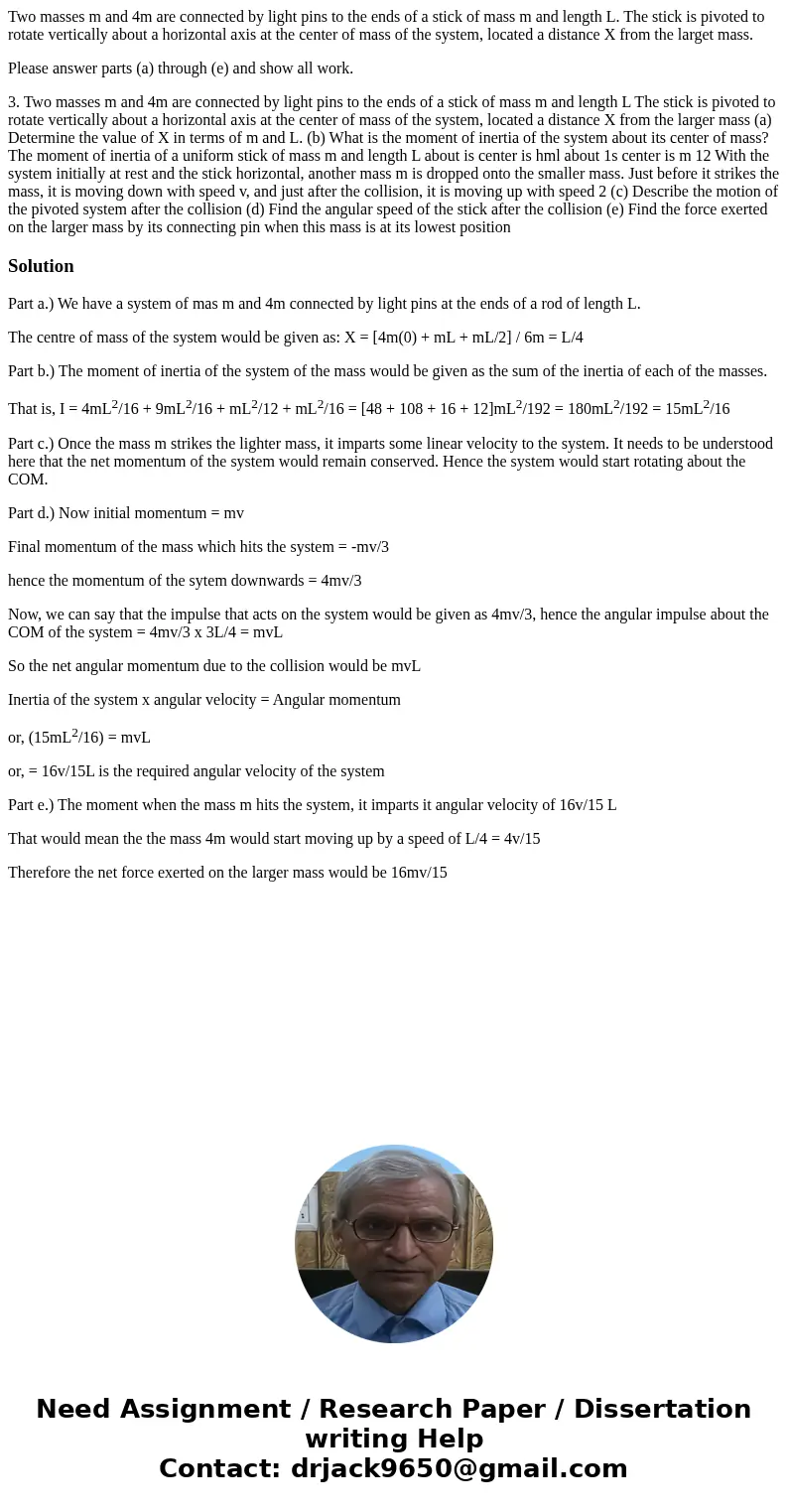Two masses m and 4m are connected by light pins to the ends
Two masses m and 4m are connected by light pins to the ends of a stick of mass m and length L. The stick is pivoted to rotate vertically about a horizontal axis at the center of mass of the system, located a distance X from the larget mass.
Please answer parts (a) through (e) and show all work.
3. Two masses m and 4m are connected by light pins to the ends of a stick of mass m and length L The stick is pivoted to rotate vertically about a horizontal axis at the center of mass of the system, located a distance X from the larger mass (a) Determine the value of X in terms of m and L. (b) What is the moment of inertia of the system about its center of mass? The moment of inertia of a uniform stick of mass m and length L about is center is hml about 1s center is m 12 With the system initially at rest and the stick horizontal, another mass m is dropped onto the smaller mass. Just before it strikes the mass, it is moving down with speed v, and just after the collision, it is moving up with speed 2 (c) Describe the motion of the pivoted system after the collision (d) Find the angular speed of the stick after the collision (e) Find the force exerted on the larger mass by its connecting pin when this mass is at its lowest positionSolution
Part a.) We have a system of mas m and 4m connected by light pins at the ends of a rod of length L.
The centre of mass of the system would be given as: X = [4m(0) + mL + mL/2] / 6m = L/4
Part b.) The moment of inertia of the system of the mass would be given as the sum of the inertia of each of the masses.
That is, I = 4mL2/16 + 9mL2/16 + mL2/12 + mL2/16 = [48 + 108 + 16 + 12]mL2/192 = 180mL2/192 = 15mL2/16
Part c.) Once the mass m strikes the lighter mass, it imparts some linear velocity to the system. It needs to be understood here that the net momentum of the system would remain conserved. Hence the system would start rotating about the COM.
Part d.) Now initial momentum = mv
Final momentum of the mass which hits the system = -mv/3
hence the momentum of the sytem downwards = 4mv/3
Now, we can say that the impulse that acts on the system would be given as 4mv/3, hence the angular impulse about the COM of the system = 4mv/3 x 3L/4 = mvL
So the net angular momentum due to the collision would be mvL
Inertia of the system x angular velocity = Angular momentum
or, (15mL2/16) = mvL
or, = 16v/15L is the required angular velocity of the system
Part e.) The moment when the mass m hits the system, it imparts it angular velocity of 16v/15 L
That would mean the the mass 4m would start moving up by a speed of L/4 = 4v/15
Therefore the net force exerted on the larger mass would be 16mv/15

 Homework Sourse
Homework Sourse